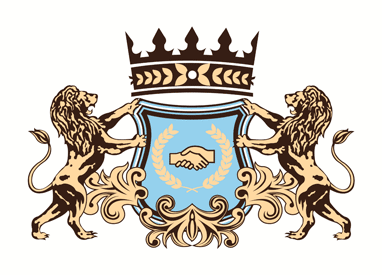Tamarack Valley Energy Announces Q3 2025 Results, Enhanced Corporate Guidance and Dividend Increase
Tamarack Valley Energy Announces Q3 2025 Results, Enhanced Corporate Guidance and Dividend Increase |
| [29-October-2025] |
TSX: TVE CALGARY, AB, Oct. 29, 2025 /CNW/ - Tamarack Valley Energy Ltd. is pleased to announce its financial and operating results for the three and nine months ended September 30, 2025. Selected financial and operating information should be read with Tamarack's unaudited consolidated financial statements and management's discussion and analysis for the three and nine months ended September 30, 2025, which are available at www.sedarplus.ca and www.tamarackvalley.ca. Tamarack has delivered strong third quarter results, generating cash provided by operating activities of $226.2 million, adjusted funds flow(1) of $200.6 million and free funds flow(1) of $95.7 million. Year to date, Tamarack has generated free funds flow of $319.5 million, a 7% improvement over the same period in 2024, despite softening commodity prices in 2025. Tamarack continues to drive capital efficiencies, improve price realizations and lower lifting costs, which has enhanced the Company's margins and lowered breakeven prices. In response to the strong correlation of water volume injection and production response being observed in the Clearwater, Tamarack continues to expand the scope of its waterflood development program through capital reallocation. The ongoing waterflood investments continue to provide the Company with lower-cost, higher-margin development opportunities that are driving an accelerated reduction in corporate decline rates. The near term waterflood investments also provide Tamarack with an opportunity to enhance production growth in future years while preserving primary inventory in the current lower commodity price environment. Highlights for the three and nine months ended September 30, 2025
Q3 2025 operational and financial highlights
2025 Guidance Update
Tamarack remains on track to achieve full year production guidance of 67,000 – 69,000 boe per day. Strong base volumes and lower declines from expanded waterflood activities in the Clearwater and the tuck-in acquisition of additional Clearwater assets in the third quarter, are expected to replace most of the production from the East Asset Divestiture in the fourth quarter of 2025. Net production expense(1) guidance has been reduced by 5% for the full year. In September, Tamarack revised net production expense(1) guidance in conjunction with the East Asset Divestiture, which carried higher operating costs on a per barrel basis relative to Tamarack's corporate averages on retained assets. In October, Tamarack reduced the high end of the guidance by a further $0.25 per boe primarily due to recent base asset performance. Royalty rates for the full year are expected to decline by 7%, primarily due to higher gas cost allowance credits and lower reference commodity prices in the second half of the year. Proceeds from the East Asset Divestiture were initially utilized to reduce bank debt providing Tamarack with available borrowing capacity under the Credit Facility exceeding $780 million at closing. The divestiture provides the Company with future optionality to increase shareholder returns, accelerate ongoing waterflood developments or pursue strategic tuck-in acquisitions in the Clearwater. With low breakeven economics on the Company's core plays and a disciplined hedging program, Tamarack is well positioned to withstand a lower commodity price environment in the near term. With current strip prices at approximately US$60 per bbl WTI, the Company is forecasting to generate 2025 free funds flows that will exceed the original budgeted free funds flow, which was originally forecasted at US$70 per bbl WTI. This increase is primarily due to improved heavy oil price differentials, lower net production expenses, production outperformance and improved capital efficiencies. Clearwater Update Incremental oil response from waterflood activities in the Clearwater continues to be highly correlated with injection rates across the play. Tamarack increased Clearwater injection in the third quarter to more than 30,000 bbl per day by the end of September, representing a 300% increase in year-over-year injection rates. This increase surpasses the Company's previous 2025 exit rate target three months ahead of schedule. The Company now anticipates 2025 exit injection rates to exceed 35,000 bbl per day, reflecting ~22% of the Company's Clearwater production under waterflood, and is expected to further accelerate incremental oil response in the near term. Response from the Clearwater waterflood continued to grow throughout the quarter, with total heavy oil uplift now estimated to be 4,500 bbl per day. Base Clearwater production under waterflood from pre-2025 development activities has increased by more 60% since the beginning of the year. The 100/15-02-075-25W4 and 100/16-02-075-25W4 patterns continue to rank among the top Clearwater multi-lateral producers in the play, with total uplift of 1,500 bbl per day. Tamarack is now observing similar outperformance from the Company's 102/01-11-074-25W4 W-pattern which is currently producing 700 bbl per day, representing an increase of 625 bbl per day. The Company has implemented an additional 11 W patterns across the Clearwater fairway and expects to see production growth from these patterns throughout 2026. Charlie Lake Update Tamarack resumed Charlie Lake drilling and completions activities in the third quarter with four (4.0 net) horizontal wells drilled in the period. The Company also completed three (3.0 net) horizontal wells all with initial test rates meeting or exceeding type curve expectations. The Company plans to continue running a one-rig program for the remainder of 2025. Ongoing delays in the startup of the third-party CSV Albright gas processing facility at Charlie Lake are not anticipated to have a significant impact on Tamarack's production for 2025 or 2026 with the utilization of other third-party infrastructure and the reallocation of development capital to areas of the field which are supported by alternate facilities. Tamarack retains significant capital allocation optionality with respect to the Charlie Lake, having now secured sufficient processing and egress capacity to support ongoing operations and facilitate potential growth across the region. Acquisitions and Divestitures On October 15, 2025, Tamarack sold its two remaining non-core producing assets in Eastern Alberta for cash consideration of $112.0 million before closing adjustments, and the assumption of undiscounted asset retirement obligations of $62.5 million (~50% inactive) (the "East Asset Divestiture"). The East Assets produced approximately 4,000 boe per day (3,500 bbl per day of oil), or 6% of Tamarack's corporate production. The East Assets were undercapitalized in Tamarack's portfolio with developments focused primarily on the core Clearwater and Charlie Lake assets. The divestment reduced the Company's asset retirement obligations by 25% and is also expected to improve Tamarack's go-forward net production expenses per boe(1) by ~10% as the East Assets carried higher operating costs on a per barrel basis relative to the Company's corporate average. Executive Changes Effective January 1, 2026, Kevin Johnston has been promoted to Chief Financial Officer. Mr. Johnston joined Tamarack in 2023 as Vice President, Finance and has over 20 years of industry experience, including 10 years as an executive at public energy companies. Mr. Johnston is a Chartered Professional Accountant and holds a master's degree in professional accounting. Since joining Tamarack, Kevin has been expanding his role to enable a smooth transition. The Board of Directors places considerable importance and time to succession planning, retention as well as training and development of executive staff. This ensures smooth transition that offers business continuity. With the support of the executive leadership team, Steve Buytels, President, will assume responsibility for safety, capital and operations alongside his existing accountabilities. Investor Call About Tamarack Valley Energy Ltd. Reader Advisories Notes to Press Release
Disclosure of Oil and Gas Information Product Types Q3 2025 corporate production of 66,126 boe/d: 43,357 bbl/d heavy oil, 11,283 bbl/d light/medium oil, 2,029 bbl/d NGL, 56,740 mcf/d natural gas. Q3 2025 Charlie Lake production of 13,997 boe/d: 7,486 boe/d light/medium oil, 1,643 bbl/d NGL and 29,210 mcf/d natural gas. Q2 2025 Charlie Lake production of 18,940 boe/d: 9,990 bbl/d light/medium oil, 2,800 bbl/d NGL, 36,900 mcf/d natural gas. Q3 2025 Clearwater production of 47,751: 43,363 bbl/d heavy oil, 331 bbl/d NGL, 24,340 mcf/d natural gas. Q3 2024 Clearwater production of 42,921 boe/d: 39,050 bbl/d heavy oil, 348 bbl/d NGL, 21,137 mcf/d natural gas. Corporate guidance of 67,000 – 69,000 boe/d: 41,150-42,350 bbl/d heavy oil, 13,300-13,700 bbl/d light/med. oil, 2,300-2,360 bbl/d NGL and 61,550-63,550 mcf/d natural gas. Forward Looking Information Future dividend payments and share buybacks, if any, and the level thereof, are uncertain, as the Company's return of capital framework and the funds available for such activities from time to time is dependent upon, among other things, free funds flow financial requirements for the Company's operations and the execution of its strategy, fluctuations in working capital and the timing and amount of capital expenditures, debt service requirements and other factors beyond the Company's control. Further, the ability of Tamarack to pay dividends and buyback shares will be subject to applicable laws (including the satisfaction of the solvency test contained in applicable corporate legislation) and contractual restrictions contained in the instruments governing its indebtedness, including its credit facility. The forward-looking statements contained in this document are based on certain key expectations and assumptions made by Tamarack, including those relating to: the business plan of Tamarack; the assets acquired pursuant to the Acquisition; the timing of and success of future drilling, conversion, development and completion activities; the geological characteristics of Tamarack's properties; prevailing commodity prices, price volatility, price differentials and the actual prices received for the Company's products; the realization of anticipated benefits of the Company's infrastructure, waterflood development program and recent acquisitions and divestitures (including the Acquisition of Clearwater assets and the East Asset Divestiture; the availability and performance of drilling rigs, facilities, pipelines and other oilfield services; the timing of past operations and activities in the planned areas of focus; the performance of new and existing wells; the application of existing drilling and fracturing techniques; the Company's ability to secure sufficient amounts of water; prevailing weather and break-up conditions; royalty regimes and exchange rates; impact of inflation on costs; the application of regulatory and licensing requirements; the continued availability of capital and skilled personnel; the ability to maintain or grow the banking facilities; the accuracy of Tamarack's geological interpretation of its drilling and land opportunities, including the ability of seismic activity to enhance such interpretation; and Tamarack's ability to execute its plans and strategies. Although management considers these assumptions to be reasonable based on information currently available, undue reliance should not be placed on the forward-looking statements because Tamarack can give no assurances that they may prove to be correct. By their very nature, forward-looking statements are subject to certain risks and uncertainties (both general and specific) that could cause actual events or outcomes to differ materially from those anticipated or implied by such forward-looking statements. These risks and uncertainties include, but are not limited to: risks with respect to unplanned third party pipeline outages and risks relating to inclement and severe weather events and natural disasters, such as fire, drought and flooding, including in respect of safety, asset integrity and shutting-in production; the risk that future dividend payments thereunder are reduced, suspended or cancelled; incorrect assessments of the value of benefits to be obtained from exploration and development programs; risks associated with the oil and gas industry in general (e.g. operational risks in development, exploration and production; and delays or changes in plans with respect to exploration or development projects or capital expenditures); the risk that (i) the U.S. and Canadian governments maintain tariffs, increase the rate or scope of tariffs, or impose new tariffs on the import of goods from one country to the other, including on oil and natural gas, (ii) the U.S. and/or Canada imposes any other form of tax, restriction or prohibition on the import or export of products from one country to the other, including on oil and natural gas, and (iii) the tariffs imposed by the U.S. on other countries and responses thereto could have a material adverse effect on the Canadian, U.S. and global economies, and by extension the Canadian oil and natural gas industry and the Company; commodity prices, including the impact of the actions of OPEC and OPEC+ members; risks relating to reliance on third parties, including in respect of the Company's use of third-party infrastructure at Charlie Lake; the uncertainty of estimates and projections relating to production, cash generation, costs and expenses, including increased operating and capital costs due to inflationary pressures; health, safety, litigation and environmental risks; access to capital; and pandemics. In addition, ongoing military actions in the Middle East and between Russia and Ukraine have the potential to threaten the supply of oil and gas from those regions. The long-term impacts of the actions between these nations remains uncertain. Due to the nature of the oil and natural gas industry, drilling plans and operational activities may be delayed or modified to respond to market conditions, results of past operations, regulatory approvals or availability of services causing results to be delayed. Please refer to the most recent annual information form of the Company and the Management's Discussion and Analysis, for additional risk factors relating to Tamarack, which can be accessed either on Tamarack's website at www.tamarackvalley.ca or under the Company's profile on www.sedarplus.ca. The forward-looking statements contained in this news release are made as of the date hereof and the Company does not undertake any obligation to update publicly or to revise any of the included forward-looking statements, except as required by applicable law. The forward-looking statements contained herein are expressly qualified by this cautionary statement. This news release contains future-oriented financial information and financial outlook information (collectively, "FOFI") about generating sustainable long-term growth in free funds flow, dividends, share buybacks, debt reduction, 2025 exit injection rates, prospective results of operations and production (including annual average production, average oil & NGL weighting), hedging, operating costs, the revised 2025 capital guidance, 2025 free funds flow, 2025 annual budget and budget pricing, balance sheet strength, adjusted funds flow and free funds flow and components thereof, including pro forma the completion of the Acquisition, all of which are subject to the same assumptions, risk factors, limitations and qualifications as set forth in the above paragraphs. FOFI contained in this document was approved by management as of the date of this document and was provided for the purpose of providing further information about Tamarack's future business operations. Tamarack and its management believe that FOFI has been prepared on a reasonable basis, reflecting management's best estimates and judgments, and represent, to the best of management's knowledge and opinion, the Company's expected course of action. However, because this information is highly subjective, it should not be relied on as necessarily indicative of future results. Tamarack disclaims any intention or obligation to update or revise any FOFI contained in this document, whether as a result of new information, future events or otherwise, unless required pursuant to applicable law. Readers are cautioned that the FOFI contained in this document should not be used for purposes other than for which it is disclosed herein. Changes in forecast commodity prices, differences in the timing of capital expenditures, and variances in average production estimates can have a significant impact on the key performance measures included in Tamarack's revised guidance. The Company's actual results may differ materially from these estimates. Specified Financial Measures Net Production Expenses, Operating Netback and Operating Field Netback (Non-IFRS Financial Measures, and Non-IFRS Financial Ratios if calculated on a per boe basis) – Management uses certain industry benchmarks, such as net production expenses, operating netback and operating field netback, to analyze financial and operating performance. Net Production Expenses are determined by deducting processing income primarily generated by processing third party volumes at processing facilities where the Company has an ownership interest. Under IFRS this source of funds is required to be reported as income. Where the Company has excess capacity at one of its facilities, it will process third party volumes as a means to reduce the cost of operating/owning the facility, and as such third-party processing revenue is netted against production expenses in the Management's Discussion and Analysis. Operating Netback equals total petroleum and natural gas sales (net of blending), including realized gains and losses on commodity and foreign exchange derivative contracts, less royalties, net production expenses and transportation expense. "Operating Field Netback" equals total petroleum and natural gas sales, less royalties, net production expenses and transportation expense. These metrics can also be calculated on a per boe basis, which results in them being considered a non-IFRS financial ratio. Management considers operating netback and operating field netback important measures to evaluate Tamarack's operational performance, as it demonstrates field level profitability relative to current commodity prices. EBITDA (non-IFRS financial measure) is calculated as consolidated net income (loss) before interest and financing expenses, income taxes, depletion, depreciation and amortization, adjusted for certain non-cash, extraordinary and non-recurring items primarily relating to unrealized gains and losses on financial instruments and impairment losses. The Company considers this metric as key measures that demonstrate the ability of the Company's continuing operations to generate the cash flow necessary to maintain production at current levels and fund future growth through capital investment and to service and repay debt. The most directly comparable IFRS measure to EBITDA is cash provided by operating activities. Adjusted funds flow (capital management measure) is calculated by taking cash-flow from operating activities, on a periodic basis, deducting current income tax expense and interest expense (excluding fees) and adding back income tax paid, interest paid, changes in non-cash working capital, expenditures on asset retirement obligations and transaction costs settled during the applicable period. Tamarack believes the timing of collection, payment or incurrence of these items is variable and that adjusting for estimated current income taxes and interest in the period expensed is a better indication of the adjusted funds generated by the Company. Expenditures on asset retirement obligations may vary from period to period depending on capital programs and the maturity of the Company's operating areas. Expenditures on asset retirement obligations are managed through the capital budgeting process which considers available adjusted funds flow. Tamarack uses adjusted funds flow as a key measure to demonstrate the Company's ability to generate funds to repay debt, pay dividends and fund future capital investment. Adjusted funds flow per share is calculated using the same weighted average basic and diluted shares that are used in calculating income per share, which results in the measure being considered a supplemental financial measure. Adjusted funds flow can also be calculated on a per boe basis, which results in the measure being considered a supplemental financial measure. Free funds flow (capital management measure) is calculated by taking adjusted funds flow and subtracting capital expenditures, excluding acquisitions and dispositions. Management believes that free funds flow provides a useful measure to determine Tamarack's ability to improve returns and manage long-term value of the business. Adjusted net income (non-IFRS financial measure) is determined by removing impairment losses, gains and losses on dispositions and unrealized gains and losses on risk management contracts on an after-tax basis from the Company's net income (loss) for the period. Tamarack and others utilize this performance metric to assess earnings in the absence of non-cash gains and losses. This metric may also be presented on a per share basis as a non-GAAP financial ratio. Net debt (capital management measure) is calculated as credit facilities plus senior unsecured notes, plus deferred acquisition payment notes, plus working capital surplus or deficiency, plus other liability, including the fair value of cross-currency swaps, plus government loans, plus facilities acquisition payments, less notes receivable and excluding the current portion of fair value of financial instruments, asset retirement obligations, lease liabilities and the cash award incentive plan liability. Net Debt to EBITDA (capital management measure) is calculated as net debt at a point in time divided by EBITDA. Management considers Net Debt to EBITDA an important measure as it is a key metric to identify the Company's ability to fund financing expenses, net debt reductions and other obligations. When this measure is presented quarterly, EBITDA is annualized by multiplying by four. When this measure is presented on a trailing twelve-month basis, EBITDA for the twelve months preceding the net debt date is used in the calculation. Please refer to the Management's Discussion and Analysis for additional information relating to specified financial measures including non-IFRS financial measures, non-IFRS financial ratios and capital management measures. The Management's Discussion and Analysis can be accessed either on Tamarack's website at www.tamarackvalley.ca or under the Company's profile on www.sedarplus.ca. Abbreviations
SOURCE Tamarack Valley Energy Ltd. | |||||||||||||||||||||||||||||||||||||||||||||||||||||||||||||||||||||||||||||||||||||||||||||||||||||||||||||||||||||||||||||||||||||||||||||||||||||||||||||||||||||||||||||||||||||||||||||||||||||||||||||||||||||||||||||||||||||||||||||||||||||||||||||||||||||||||||||||||||||||||||||||||||||||||||||||||||||||||||||||||||||||||||||||||||||||||||||||||||||||||||||||||||||||||||||||||||||||||||||||||||||||||||||||||||||||||||||||||||||||||||||||||||||||||||||||||||||||||||||||||
Company Codes: Toronto:TVE | |||||||||||||||||||||||||||||||||||||||||||||||||||||||||||||||||||||||||||||||||||||||||||||||||||||||||||||||||||||||||||||||||||||||||||||||||||||||||||||||||||||||||||||||||||||||||||||||||||||||||||||||||||||||||||||||||||||||||||||||||||||||||||||||||||||||||||||||||||||||||||||||||||||||||||||||||||||||||||||||||||||||||||||||||||||||||||||||||||||||||||||||||||||||||||||||||||||||||||||||||||||||||||||||||||||||||||||||||||||||||||||||||||||||||||||||||||||||||||||||||




















